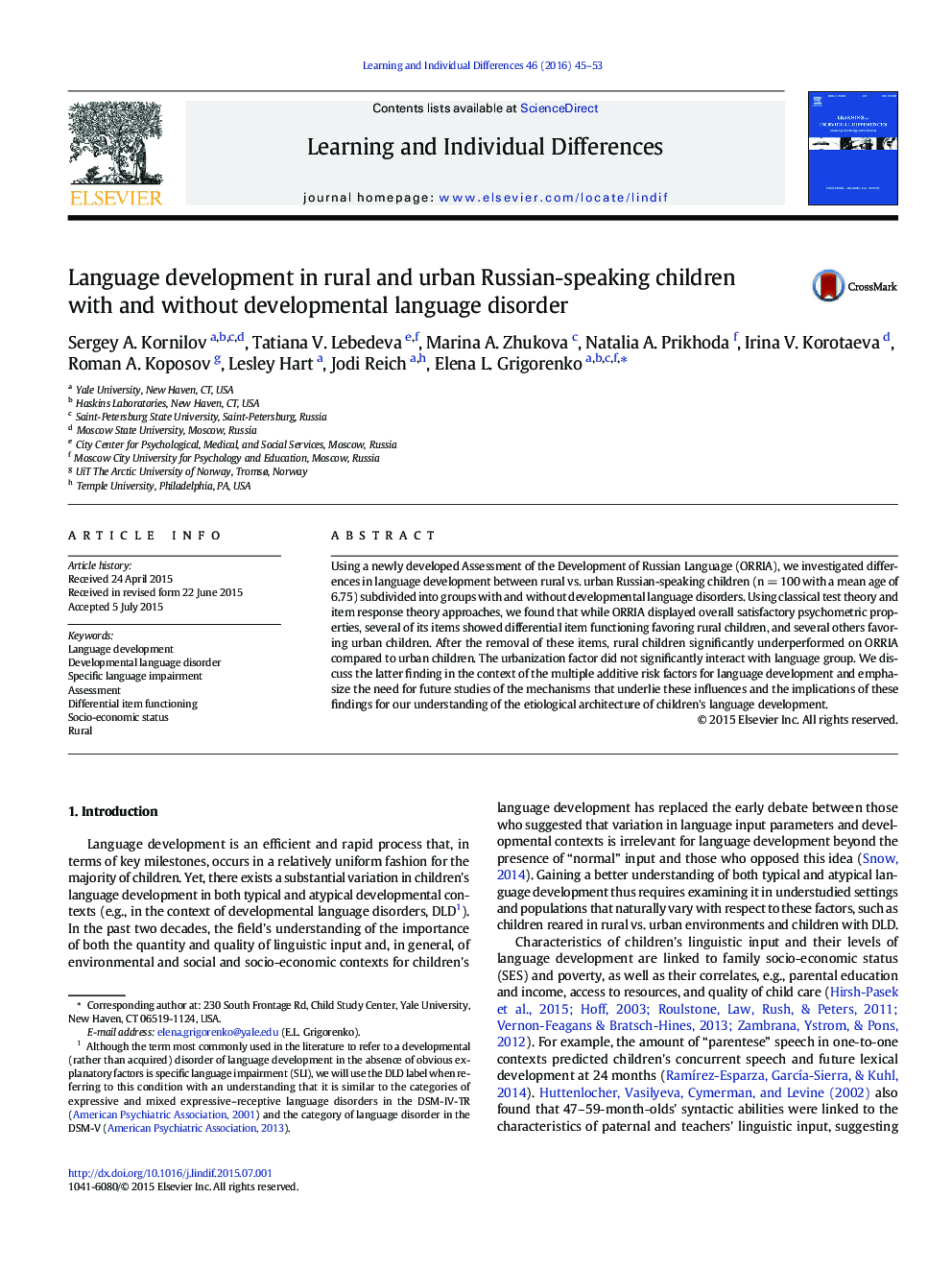| Article ID | Journal | Published Year | Pages | File Type |
|---|---|---|---|---|
| 364492 | Learning and Individual Differences | 2016 | 9 Pages |
•Examined psychometric properties of a new Russian language development assessment•Evaluated language in rural and urban children with and without language disorders•Children from the rural locale and children with disorders significantly underperformed•Urbanization and status did not interact, supporting the additive risk scenario.
Using a newly developed Assessment of the Development of Russian Language (ORRIA), we investigated differences in language development between rural vs. urban Russian-speaking children (n = 100 with a mean age of 6.75) subdivided into groups with and without developmental language disorders. Using classical test theory and item response theory approaches, we found that while ORRIA displayed overall satisfactory psychometric properties, several of its items showed differential item functioning favoring rural children, and several others favoring urban children. After the removal of these items, rural children significantly underperformed on ORRIA compared to urban children. The urbanization factor did not significantly interact with language group. We discuss the latter finding in the context of the multiple additive risk factors for language development and emphasize the need for future studies of the mechanisms that underlie these influences and the implications of these findings for our understanding of the etiological architecture of children's language development.
